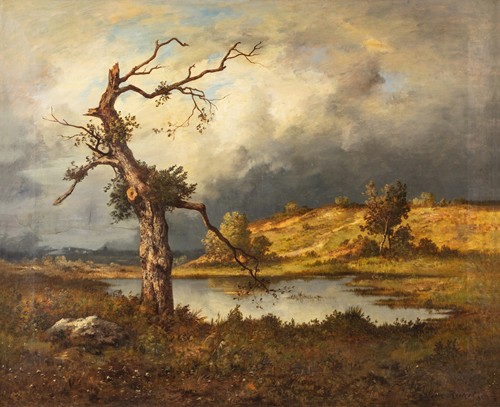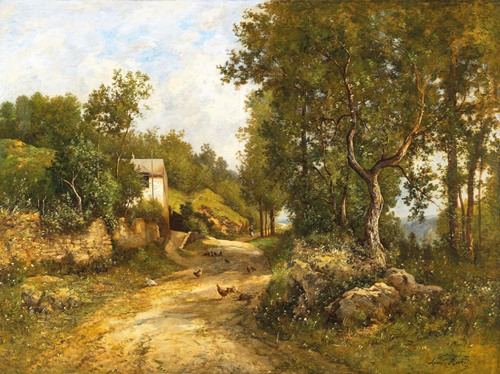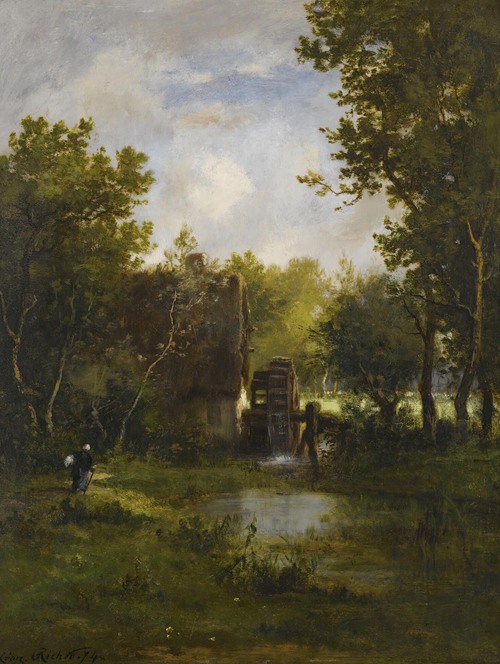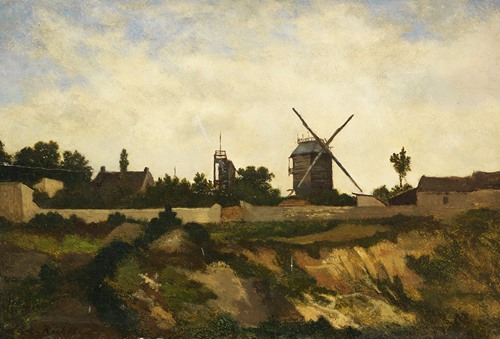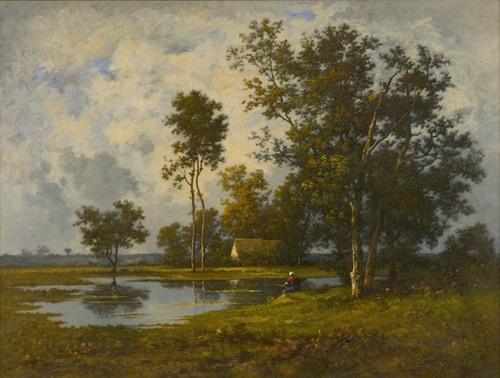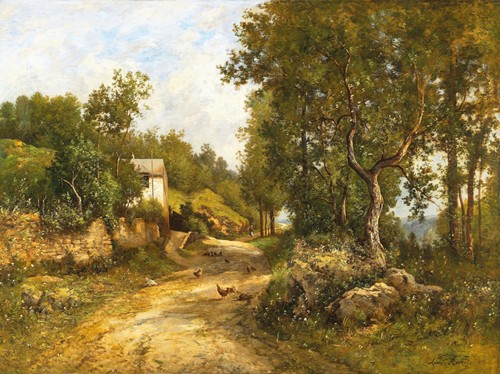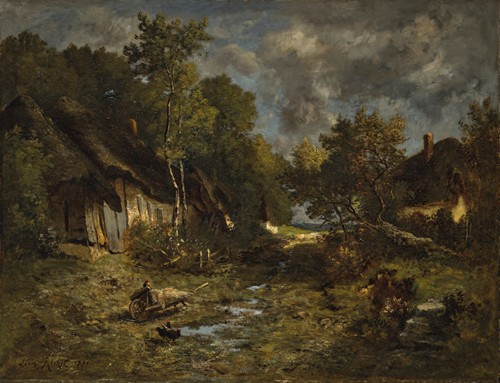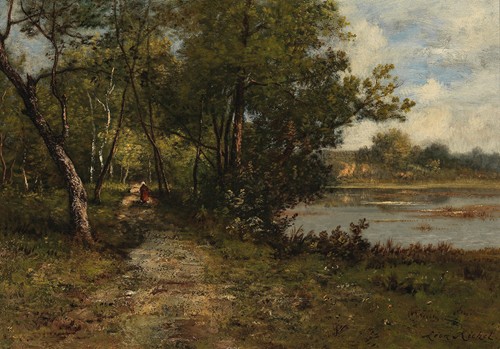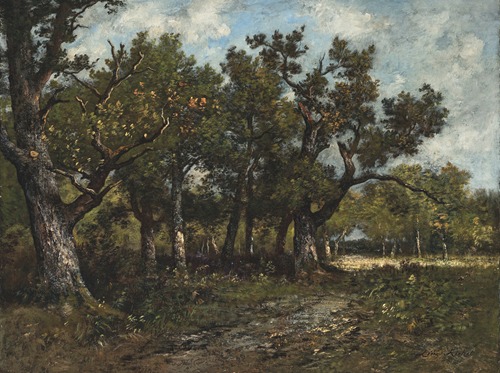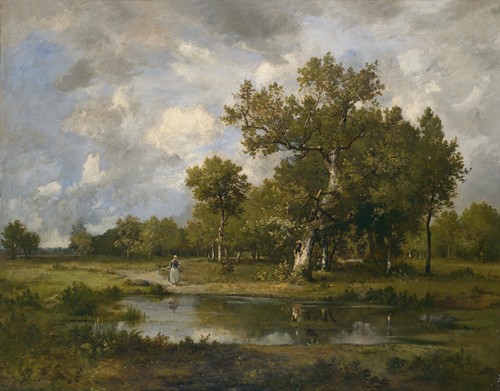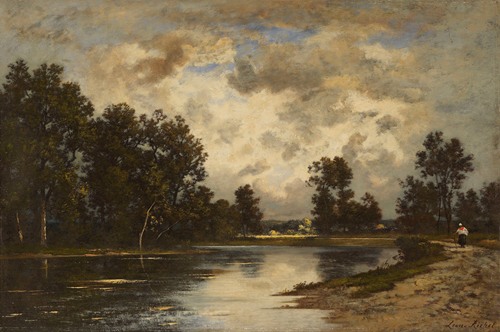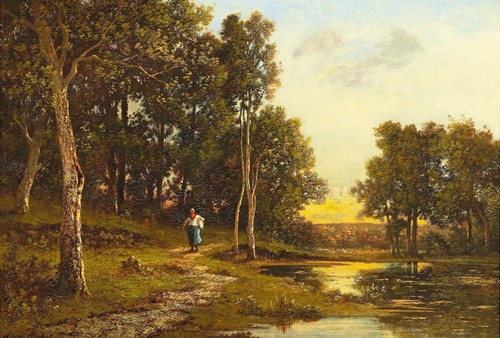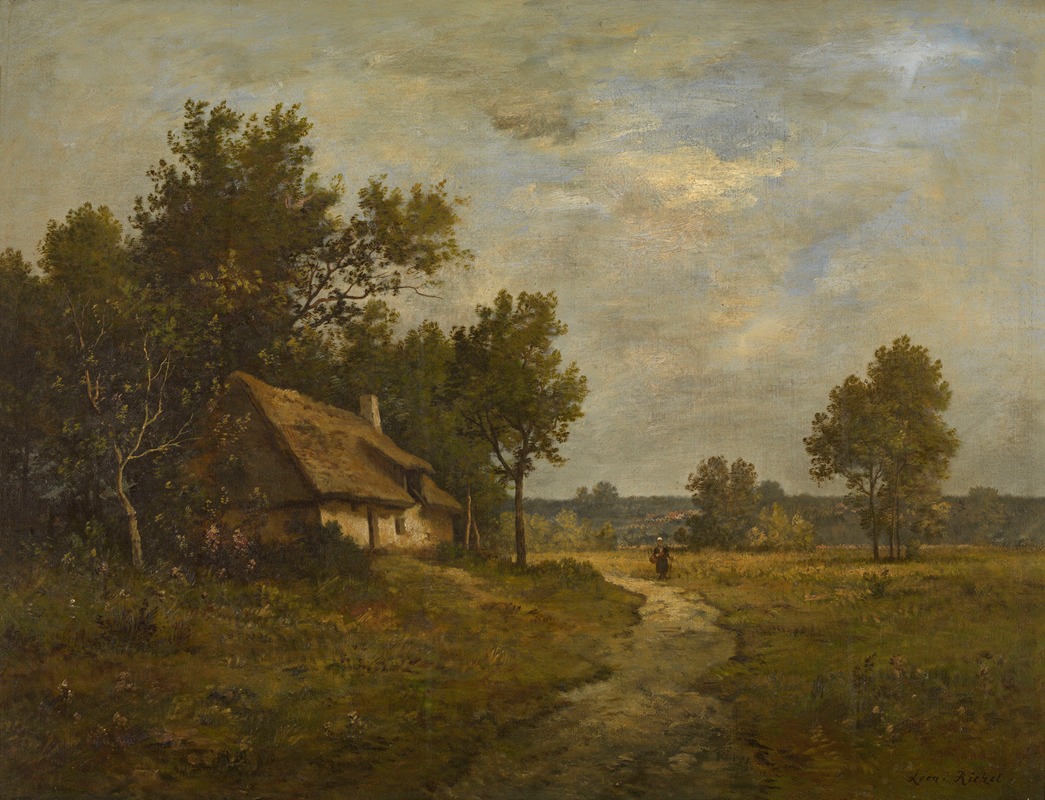
Leon Richet was a French landscape painter, born into a milling family, in Solesmes, Northern France on 15th of April 1843. His parents’ mill was well known in and around Solesmes. As a young man, Richet attended drawing classes at the Academy in Valenciennes, taught by Ambroise Détrez, a former pupil of the well-known French History painter, Coignet. Richet continued to associate with the school in Valenciennes and became a teacher there in 1879.
Richet spent much of his adult life in Paris. It was there that he met and became a student of Jules Lefebvre. He also became a disciple of Diaz la Pena. Both of these teachers were well-known proponents of the Barbizon School. The Barbizon school of painters were part of a movement towards Realism in art, which arose in the context of the dominant Romantic Movement of the time. The Barbizon school was active from roughly 1830 until 1870, was inspired originally by the work on John Constable, and included, most notably, Theodore Rousseau and Jean-Francois Millet. It takes its name from the village of Barbizon, France, near the Forest of Fontainebleau, where many of the artists gathered. Some of the most prominent features of this school are its tonal qualities, color, loose brushwork, and softness of form.
These Realist artists would shape Richet’s style, and in turn his successful career as a landscape painter. The artist sometimes collaborated with Lefebvre; there are several paintings which bare both of their signatures. Lefebvre’s teaching is evident in paintings such as this L’étang les hautes herbes, in the delicate way in which Richet accurately depicted the effects of light and reflection on the water. His compositions, such as this one, are known for their lightness and openness. These qualities set Richet apart from his mentors and counterparts, such as Diaz and Corot; whose work often comprise enclosed and shadowy views of nature. This meant Richet enjoyed a successful and prolific career, and his work was widely exhibited during his own lifetime.
At the Salons of Paris, he obtained honorable mention in 1885, medals in 1896 and 1900; and from then on was considered to be a leader in the Barbizon School, and later proposed for the cross of the Legion of Honor. Like many painters of the Barbizon School, Richet had a fondness for the Forest of Fontainebleau, and it provided the subjects for the majority of his paintings. A Road to the Forest of Fontainebleau was perhaps his most famous painting and drew public attention to his name at the time it was painted. Richet also loved the areas of Moret sur Loing, Loiret, Normandy and Burgundy as sources for his painterly inspiration, as well as views along the River Seine. He was a member of the Society of French Artists and exhibited with them from 1880 until his death in 1907.
